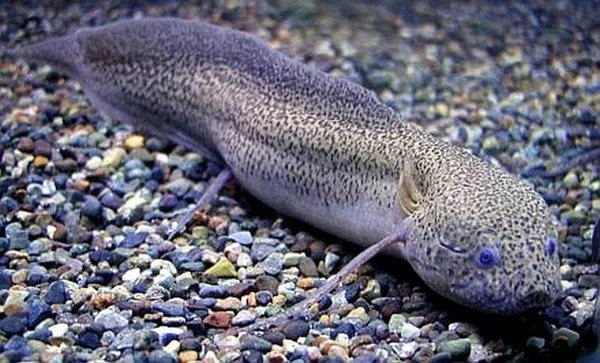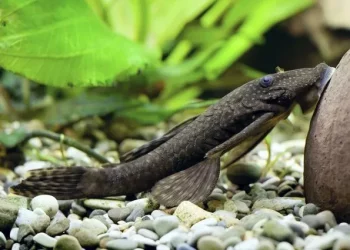The Australian lungfish (Neoceratodus forsteri) is a fascinating and unique freshwater fish that is found only in Australia. It is the largest of all the lungfish species, growing up to 1.8 meters in length and weighing up to 40 kg. In this article, we will explore where Australian lungfish live, their habitat requirements, and their behavior in the wild.
Habitat
Australian lungfish are found in freshwater rivers and streams in eastern Australia, primarily in the Burnett and Mary River systems in Queensland. They are also found in some of the tributaries of the Fitzroy River in central Queensland. These fish prefer slow-moving or still waters with sandy or muddy bottoms and plenty of vegetation for cover.
Behavior
Australian lungfish are primarily nocturnal and spend much of their time hiding among the vegetation on the river bottom. They are bottom dwellers and feed on a variety of prey, including crustaceans, mollusks, and small fish. They have a unique feeding behavior where they use a suction method to suck up prey from the river bottom.
Lungfish are known for their ability to survive in harsh environments with low oxygen levels, and the Australian lungfish is no exception. In times of drought, these fish can burrow into the river bottom and create a cocoon-like structure where they can survive for months without access to oxygen. This ability to survive in harsh conditions has helped them to survive for millions of years.
Breeding
Breeding for Australian lungfish occurs during the summer months, from October to December. During this time, the male lungfish builds a nest in the river bottom by digging a depression and piling up gravel around the edge. The female will then lay her eggs in the nest, and the male will fertilize them. Once the eggs are fertilized, the male will guard the nest until the eggs hatch, which can take up to 100 days.
Conservation Status
The Australian lungfish is considered a species of “Least Concern” by the International Union for Conservation of Nature (IUCN). However, this does not mean that they are not facing threats from human activities and environmental changes. Habitat destruction, pollution, and overfishing are all threats to the survival of the Australian lungfish.
To help protect the Australian lungfish and their habitat, some areas in Australia where they are found have been designated as protected areas. In Queensland, for example, it is illegal to catch, kill, or harm an Australian lungfish, and fines of up to $110,000 can be imposed for violations.
The Australian lungfish is a unique and fascinating fish that is found only in freshwater rivers and streams in eastern Australia. These fish have adapted to survive in harsh environments with low oxygen levels and are known for their ability to survive in times of drought by burrowing into the river bottom. While the Australian lungfish is currently listed as a species of “Least Concern,” it is still facing threats from human activities and environmental changes, and it is important to continue monitoring their populations and protecting their habitats for their survival in the future.


























